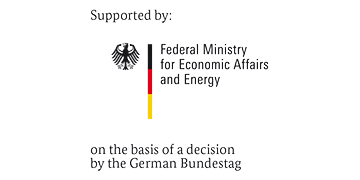
The decarbonisation of energy supply currently leads to new challenges for the modelling of urban energy systems. Among the most important challenges are integral approaches to modelling, better predictions of dynamic system behaviour and the automation of workflows to make the increasing complexity of the system manageable. As a contribution to solving these challenges, uesgraphs is a graph-based framework for the model description of grid-connected urban energy systems. uesgraphs divides the system description into a model-neutral description of the system structure and a separate description of the model structure. A Python package (networkX) for describing graphs is extended so that different energy networks, buildings and road networks can be mapped in a georeferenced graph. uesgraphs provides simple interfaces for different data sources. The georeferenced description enables the model-neutral, automated generation of simulation models of these energy networks. After the simulation, uesgraphs can also be used to visualize and analyze the simulation results, thus significantly reducing the manual effort required for these processes.
